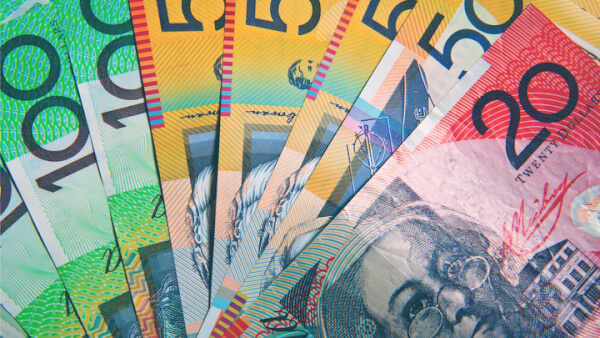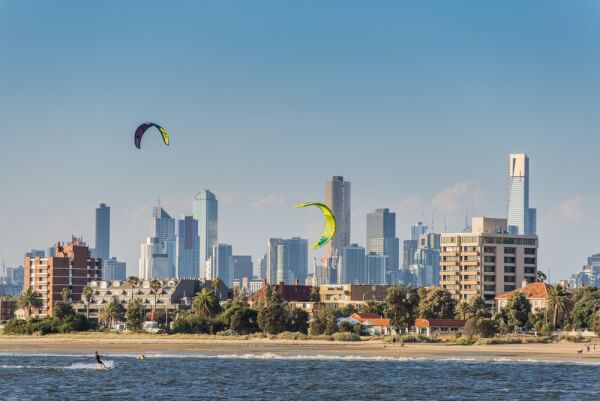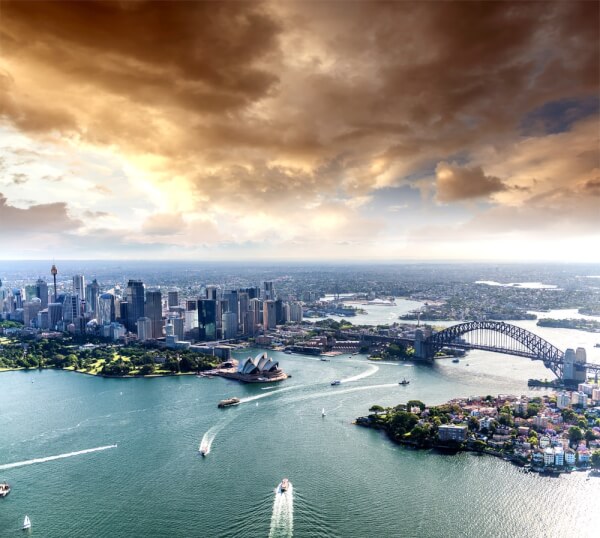Taking cash in or out of Australia? Read this.
Whether you call it the Land Down Under or just Australia, the reality is that there are real restrictions and requirements when it comes to bringing cash...

If you’re planning a trip to Australia, you may be worried about getting enough Australian Dollars for the whole trip. Well, don’t be.
Australia is the sixth largest country in the world; and it has an ATM network to match. Whether you’re staying in a major city like Sydney, backpacking through the Outback or visiting a remote area, it’s likely you’ll find an ATM. Here’s what you need to know.
In Australia, ATMs are almost everywhere: inside bank lobbies, on the streets, at shopping malls, at convenience stores and petrol stations, in pubs and sometimes even in remote locations. Some are behind locked doors for security reasons. In these cases, swipe your card to unlock.
Australia’s four largest banks - National Australia Bank, Commonwealth Bank, ANZ and Westpac - have extensive networks, with Commonwealth Bank having the most ATMs.
Most Australian ATMs accept Cirrus, Maestro (both owned by MasterCard) and Plus (owned by Visa) cards. The ATM should display the logos of all networks it’s compatible with. You can also look up the closest Visa or MasterCard ATMs by using their online locators. Your bank can confirm which network your card belongs to or you can check the logo on your card.
Some Australian ATMs only accept debit cards, so you shouldn’t rely solely on your credit card. It’s often cheaper to use your debit card to make a withdrawal, as you avoid unnecessary charges you would incur when using a credit card.
Australian ATMs accept chip-and-pin cards and standard cards with just the magnetic stripe on the back. However, you’ll need a four-number PIN. Longer PINs aren’t accepted.
Don’t forget to tell your bank the dates when you’ll be in Australia. If you don’t, it may consider your transactions suspicious and freeze your card.
Most Australian ATMs give out either AUD$20 and AUD$50 banknotes, which means you can only withdraw combinations of these notes.
Some older machines dispense notes in two lots: first AUD$20 notes and then AUD$50 notes. Always count your money and make sure you have the right amount.
Some Australian ATMs (mainly those owned by ANZ), support contactless technology. If you have a contactless bank card, you can tap it instead of inserting it into the machine. However, you’ll still need to key in your PIN. You can recognise contactless ATMs because they have the contactless symbol.
ATMs use the real exchange rate - the mid-market rate - so they offer the best exchange rate. That said, you’ll need to watch out for two types of fees: local bank charges and your bank’s charges.
Australian banks charge non-customers - including those using foreign cards - an ATM fee. This is usually AUD$2 (approximately US$1.50) per transaction. Private ATMs charge even higher fees, so try to avoid these if you can. You can recognise private ATMs because they’re not branded with a specific bank’s name and logo.
Most banks charge an ATM withdrawal fee and a foreign currency exchange fee. These charges are in addition to Australian ATM fees. You’ll be charged twice whenever you use an ATM: by the Australian bank and by your home bank.
Beware of ATMs that offer to convert the transaction to your home currency. If you agree to this, it will make up an unfavourable exchange rate using Dynamic Currency Conversion. Avoid this exchange rate rip-off by always choosing to be charged in Australian Dollars.
There are several ways you can avoid ATM fees or at least keep them to a minimum.
If your bank has a partner bank in Australia, you may be able to use its ATMs for free or at a reduced cost.
Westpac - Australia’s second largest bank - is part of the Global ATM Alliance, a network of banks that includes Barclays, Bank of America and Deutsche Bank. If your bank is part of the alliance, you can make withdrawals from other alliance banks’ ATMs without paying the local ATM fee.
Allpoint is another network offering fee-free withdrawals from its 55,000 ATM locations in Australia, the US, the UK, Canada and Mexico. You can check if your card is compatible on Allpoint’s online card checker.
Citibank and HSBC also have ATMs in Australia. Citibank offers all its customers fee-free withdrawals from their ATMs worldwide, while HSBC offer fee-free withdrawals to Advance and Premier customers.
Some banks - Metro Bank and Charles Schwab, for instance - don’t charge foreign transaction fees on selected cards. While switching banks because of one holiday sounds extreme, it might make sense if you travel a lot.
Whenever possible, you should make withdrawals using your debit card. Credit card companies treat ATM withdrawals as loans. The transaction fees will be higher and you’ll be charged interest.
ATM fees are charged per transaction, so making one large withdrawal costs less than two smaller ones. Ask your home bank what your daily limit is and withdraw the maximum amount. It is also important though to plan your budget so you don't withdraw too much and have extra AUD you need to convert back at the end of trip.
Opening a bank account in Australia isn’t too hard, even as a non-resident. If you have access to an Australian bank account, use Wise to send money to Australia at the mid-market rate. You can then make as many ATM withdrawals as you want, free of currency conversion charges, with your Australian debit card.
*Please see terms of use and product availability for your region or visit Wise fees and pricing for the most up to date pricing and fee information.
This publication is provided for general information purposes and does not constitute legal, tax or other professional advice from Wise Payments Limited or its subsidiaries and its affiliates, and it is not intended as a substitute for obtaining advice from a financial advisor or any other professional.
We make no representations, warranties or guarantees, whether expressed or implied, that the content in the publication is accurate, complete or up to date.

Whether you call it the Land Down Under or just Australia, the reality is that there are real restrictions and requirements when it comes to bringing cash...

While Perth is one of the most isolated cities in the world, it’s still well worth a visit. Closer to Indonesia than it is to Australia’s capital Canberra, it...

Australia is an attractive destination. With stunning natural scenery, vibrant cities and a fun, laid back lifestyle, it’s hardly a surprise that so many...

In this article, we'll show you the best places to exchange money in Melbourne – plus, a great alternative.

Sydney has more than a fair share of famous icons - from the Opera House and Harbour Bridge to Elle Macpherson and Hugh Jackman. Not to mention that its...